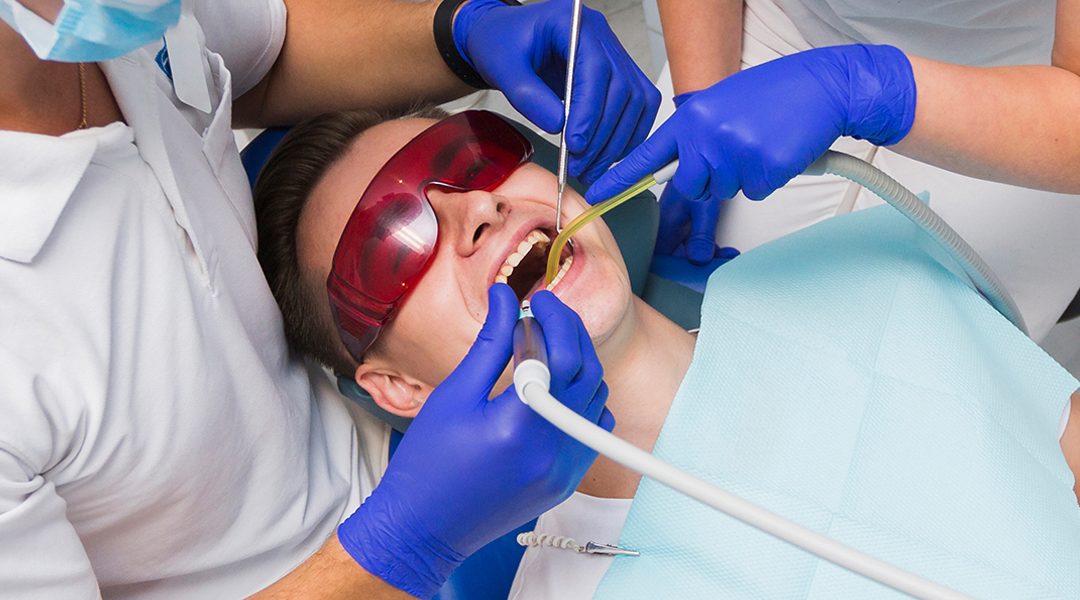Tooth extraction may sound unsettling, but recovery doesn’t have to be. The real key lies in how you care for your mouth after the procedure. From easing discomfort to avoiding setbacks, smart aftercare can make healing faster and smoother. This blog covers everything you need to know—clear, direct, and designed to help you heal right.
Immediate Post-Extraction Care
Right after the procedure, your body begins to protect and repair the area. You’ll likely leave the office with a piece of gauze over the socket. This isn’t just for show—it helps form a blood clot, which is the primary step in healing.
Here’s what to do as soon as you get home:
- Keep the gauze in place for at least 30–45 minutes unless instructed otherwise. Bite down gently.
- Avoid touching the area using your tongue, fingers, or anything else.
- Skip smoking and vaping. These activities can disturb the clot and lead to dry socket.
- Rest your head with pillows if you lie down. Keeping your head up reduces bleeding and swelling.
If you’re looking for tooth extractions near you, always ask your dental provider what you should expect during the first few hours of healing.
Managing Pain and Swelling
Mild pain and swelling are normal. In most cases, it kicks in after the numbing fades. Staying ahead of it is better than trying to fix it after it hits hard.
What helps:
- Use an ice pack on your cheek for 10–20 minutes at a time. Take breaks between rounds.
- Take the pain medicine your dentist recommends—even if it’s just over-the-counter.
- Avoid heat for the first 24 hours.
You had a tooth extraction in Vancouver—your provider likely gave you clear instructions for aftercare. Follow them closely. They’re meant for your unique recovery.
What to Eat and What to Avoid
The right foods matter. The wrong ones can make things worse. Eat to heal, not to fill a craving.
Eat This:
- Smoothies (without a straw)
- Applesauce
- Mashed potatoes
- Scrambled eggs
- Yogurt
Avoid This:
- Crunchy foods (chips, popcorn)
- Sticky treats (caramel, gum)
- Spicy dishes
- Hot drinks (let everything cool first)
- Alcohol
Stick with soft textures for at least a few days. Don’t chew near the extraction site. It’s not just about comfort—it’s about not disturbing the blood clot or causing injury.
Oral Hygiene Tips During Recovery
Cleanliness is key, but you can’t just brush like nothing happened.
Follow these simple rules:
- Brush carefully around the extraction site. Don’t touch the socket for the first 24 hours.
- Use a soft-bristled toothbrush and skip the mouthwash unless your dentist gives you one.
- After the first day, rinse your mouth gently with warm salt water after meals.
- Don’t spit forcefully. Let the water fall out naturally.
Call your dentist near you for cleaning advice that fits your situation. Getting guidance from someone who knows your case can make recovery smoother and safer.
Activities to Avoid for Proper Healing
Healing doesn’t just happen in the mouth. Your habits and movements affect how quickly and safely you recover.
Stop and think before you do these things:
- Heavy lifting or intense exercise: These can increase blood flow and lead to bleeding.
- Drinking through a straw: The suction might pull the blood clot out.
- Smoking: This is a big one. Smoking slows healing and can cause dry socket.
- Poking the site: Even with your tongue. It’s tempting, but don’t do it.
If you’re working or have a busy schedule, ask your dentist in Vancouver how long you should take it easy.
Signs of Trouble: When to Call Your Dentist
Most extractions go smoothly, but it’s good to stay alert to anything that seems off.
Call your dentist if you notice:
- Bleeding that doesn’t stop after several hours
- Intense, throbbing pain that worsens with time
- Swelling that keeps growing after 2–3 days
- Fever or chills
- A strange taste or smell coming from the socket
You know your body. If something doesn’t feel right, trust that feeling. A local dentist can give you quick answers and help if anything seems off.
Timeline for Healing: What to Expect
Healing isn’t the same for everyone, but here’s a basic idea of how your mouth mends:
- Day 1–2: Blood clot forms. You’ll feel sore but should be able to manage it.
- Days 3–5: Swelling might peak. Pain should be getting better.
- Week 1: The tissue starts closing over the socket.
- Week 2: You’ll likely feel much better, back to regular food and light activity.
- Week 3–4: Most healing complete, especially if stitches dissolve by then.
- Week 6 and beyond: Bone and gum tissue continue to strengthen behind the scenes.
Concerned about healing time after extraction? Good care in the first few days makes a real difference. Simple steps like eating soft foods, avoiding strain, and keeping the area clean help your mouth recover faster. Pay attention to how your body feels, follow your dentist’s instructions, and you’ll be back to normal sooner than you think.
Final Thoughts
Healing after a tooth extraction doesn’t have to feel uncertain. With the right care and support, you can recover comfortably and confidently. Ranieu Family Dental is here to guide you through each step, from treatment to full recovery. Ready for expert care and peace of mind? Schedule your visit today—your smile deserves the best start.


Recent Comments